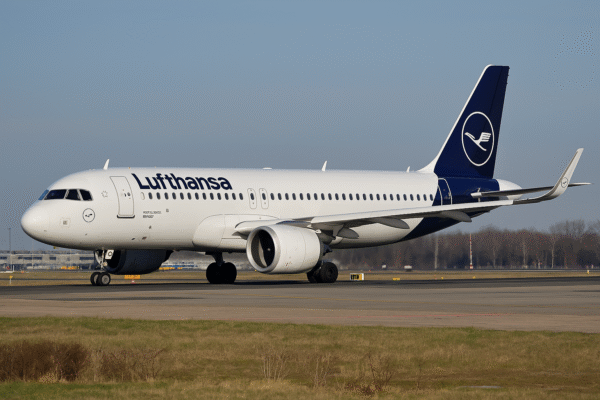JetBlue Airways has announced a strategic decision to end its operations at Miami International Airport (MIA) starting September 3, 2025. This move aligns with the airline’s broader cost-reduction strategy amid financial pressures, weakening domestic travel demand, and rising operational challenges across the U.S. aviation industry.
The airline’s only operating route out of Miami—a daily flight to Boston Logan International Airport—will be discontinued, with aircraft redeployed to more profitable markets. Passengers booked on this route beyond the suspension date will receive full refunds or have the option to reroute their flights via Fort Lauderdale-Hollywood International Airport (FLL), where JetBlue maintains a stronger presence and broader route network.
JetBlue Refocuses Network Amid Economic Pressures
In a memo obtained by media outlets, JetBlue CEO Joanna Geraghty explained that the airline is shifting capacity to high-performing routes to maximize returns and optimize fleet efficiency. She acknowledged that JetBlue’s financial recovery has not materialized as expected and that the airline continues to rely on borrowed capital to fund operations.
“Our decisions are guided by current market performance,” Geraghty stated. “Unfortunately, Miami hasn’t reached the threshold required for us to maintain operations there.”
This decision underscores the turbulence facing many U.S. carriers in 2025. According to the U.S. Department of Labor, airfares declined by over 7% in May compared to the same period last year. Airlines, including JetBlue, have been forced to reevaluate route profitability, streamline services, and manage fluctuating demand amid economic headwinds and consumer price sensitivity.
Why Miami Operations Were Cut
Miami International Airport, a competitive hub dominated by legacy carriers like American Airlines, proved challenging for JetBlue to maintain a foothold. With limited slots, high operational costs, and stiff competition, the Boston-Miami route did not meet profitability expectations.
JetBlue has historically prioritized markets where it holds greater share and visibility. Fort Lauderdale, located just 30 miles north of Miami, has long served as a major focus city for the airline. Fort Lauderdale offers JetBlue a more scalable and cost-efficient base, with multiple domestic and international connections already in place.
Impact on Passengers and Regional Connectivity
While the exit from Miami narrows direct options for travelers between South Florida and Boston, JetBlue aims to mitigate disruption by reinforcing its operations in Fort Lauderdale. The carrier plans to absorb affected Miami passengers through its nearby airport with improved scheduling and competitive pricing.
JetBlue passengers impacted by the route cancellation will be offered:
- Full refunds for Miami-Boston flights booked beyond September 3, 2025
- Complimentary rebooking options via Fort Lauderdale
- Enhanced customer support to assist with itinerary adjustments
For travelers seeking non-stop connections from Boston to Miami, other major U.S. carriers including American Airlines and Delta continue to serve this high-demand corridor.
Industry Context: U.S. Airlines Scale Back
JetBlue’s withdrawal from Miami is not an isolated decision. Airlines across the U.S. are undergoing strategic realignments to withstand ongoing financial uncertainty. Multiple carriers have scaled back underperforming routes, especially those with high overhead or lacking business travel demand.
Experts point to several key factors:
- Declining domestic travel demand, especially on leisure-heavy routes
- Persistent labor shortages and increased staffing costs
- Fuel price volatility and inflationary pressures
- Sluggish rebound in corporate and international travel segments
With forward bookings trending below pre-pandemic levels and fluctuating consumer spending, airlines are exercising greater caution in network planning.
JetBlue’s Broader Strategic Reset
Beyond Miami, JetBlue has taken several steps to reset its business strategy:
- Reallocating aircraft to high-demand transcontinental and Caribbean routes
- Reevaluating financial guidance for 2025 and suspending earnings forecasts
- Exploring partnerships and alliances to enhance market presence
- Adjusting fleet delivery timelines and deferring aircraft orders where possible
Geraghty emphasized in her message to staff that JetBlue will continue to make tough but necessary decisions to ensure long-term sustainability.
What This Means for JetBlue Passengers
Travelers planning to fly JetBlue from Miami should take note of the September 3 shutdown date. Those with plans beyond that window are encouraged to:
- Review their bookings and explore rebooking options from Fort Lauderdale
- Monitor JetBlue communications for support and schedule updates
- Explore alternate carriers for direct Boston-Miami service
JetBlue remains committed to providing value-driven service, but its focus will now be more concentrated on markets where demand aligns with profitability.
Conclusion
As JetBlue prepares to exit Miami International Airport, it joins a growing list of U.S. airlines realigning operations to navigate economic uncertainty. While the closure marks a temporary setback for direct Miami-Boston travelers, it reflects a strategic focus on operational efficiency and financial health. JetBlue’s strengthened presence at Fort Lauderdale and flexible rebooking policies aim to smooth the transition for affected passengers.
As the airline industry continues to adapt, travelers can expect further changes to routes, pricing, and service models throughout the remainder of 2025.
For more travel news like this, keep reading Global Travel Wire


















